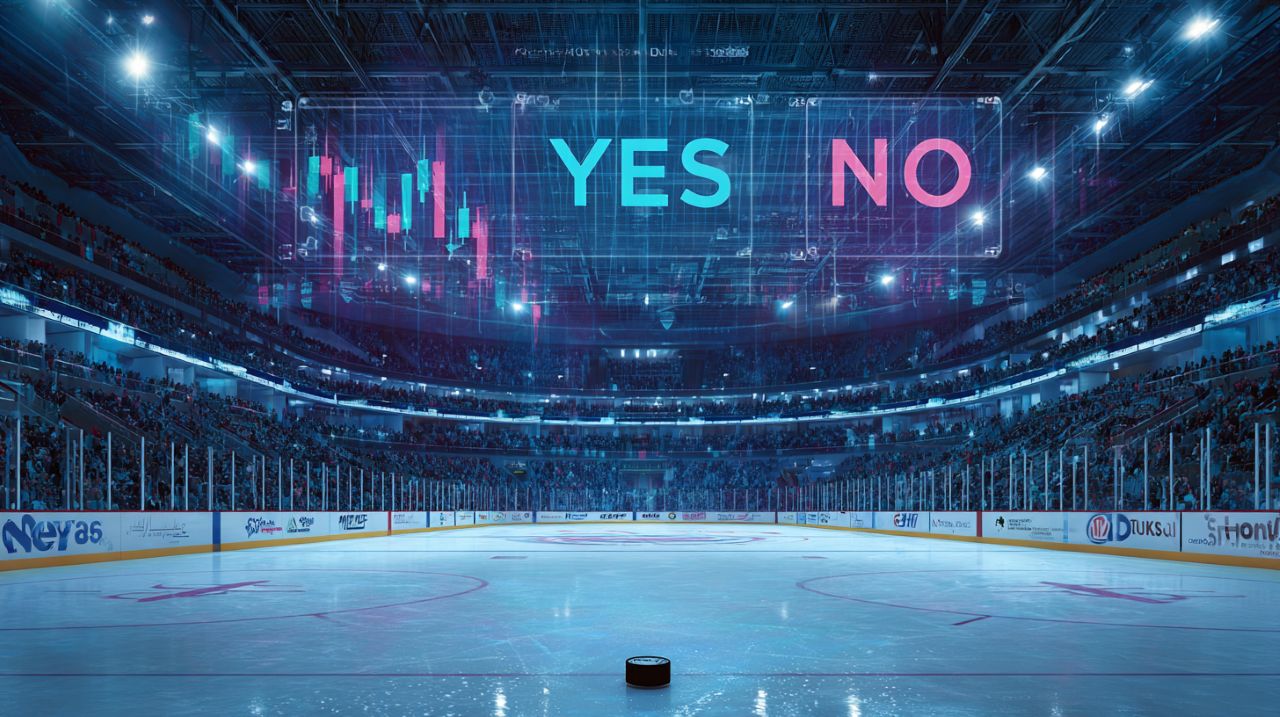
The National Hockey League has entered into a partnership with Kalshi, a federally regulated event-exchange platform that lets people trade on the outcomes of real world events.
On paper, it’s a bet on engagement. In practice, it presses every hot button in America’s uneasy relationship with gambling, finance, and sports integrity.
Let’s unpack what’s new and why it matters.
What Is Kalshi And Why The NHL?
Kalshi isn’t your typical sportsbook. It’s a Commodity Futures Trading Commission (CFTC) regulated exchange where traders buy “Yes/No” contracts on whether events occur, think: “Will Team X make the playoffs?” or “Will there be more than Y penalty minutes in a marquee game?” The NHL, like every major league, is chasing second screen engagement and new revenue streams. Kalshi offers both: a quasi financial interface that looks more like a brokerage than a betting app, with fees, liquidity, and market maker potential.
For the league, this is the next evolutionary step after embracing sportsbooks, jersey ads, and on ice branding. For Kalshi, it’s legitimacy and mainstream distribution: a path to move event trading from the finance niche into hockey’s mass audience.
The Fault Line: Gambling, Prediction Markets, And Integrity
- Sports integrity risk: The NHL already navigates the minefield of player, coach, and ref exposure to betting markets. Formalizing ties with an event exchange broadens that risk surface. Even if Kalshi sticks to macro or season long markets, the optics are fraught: anything that can be influenced, even marginally, invites skepticism about fairness.
- Regulatory gray zones: Kalshi is unusual because it operates under the CFTC, not state gaming regulators. That distinction matters. State sportsbooks live under a patchwork of strict consumer protection and integrity rules. CFTC oversight focuses on market manipulation and fair trading but was not designed for fan engagement products tied to live sports. We’re stretching an old regulatory frame over a very new chair.
- Normalizing financialized fandom: There’s a cultural line between cheering and speculating. This partnership blurs it. We’re turning outcomes into tickers. That can deepen engagement; it can also accelerate problematic behavior among younger fans, especially when the interface and language borrow credibility from finance.
The NHL’s Bet: More Time, More Data, More Money
From the league’s vantage point:
- Engagement flywheel: Markets motivate watch time. If your “Yes” contract depends on a late season surge, you’re streaming every third line shift in March.
- Data exhaust: Price action and order flow yield rich signals about fan sentiment and expectations, fuel for media, sponsorships, even team operations.
- Monetization: Co branded content, data licensing, integrations, and potentially a cut of exchange economics. The NHL isn’t shy about non ticket revenue; this slots neatly alongside sportsbook partnerships and media rights.
The Risks The League Should Own Up To
- Youth exposure and consumer harms: Financial like products carry a different halo than sportsbook apps. Positioning these as “markets” can downshift risk perception while maintaining the same addictive reinforcement loops.
- Conflict with state regimes: As state regulators scrutinize micro betting and in game props, an event exchange partnership could trigger jurisdictional friction if products start to overlap with traditional wagering.
- Labor and locker room tensions: Players have already faced scrutiny for gambling violations. Adding a new, quasi regulated trading product to the ecosystem increases confusion about what’s allowed, especially for friends, family, and staff.
The Bigger Picture: Democratic Norms And The Marketization Of Everything
This isn’t just about sports. It’s about where we draw the civic lines between markets and public trust. When everything becomes tradable, we risk incentivizing outcomes that should be governed by rules and norms, not price signals. Sports are a public square as much as entertainment business. The legitimacy of competition, what philosophers would call the “constitutive rules” of the game, depends on insulation from financial manipulation and its appearance.
Democracies need shared arenas where outcomes are decided by fair play, not capital. The NHL Kalshi deal challenges that boundary. It doesn’t doom it, but it demands scrutiny.
What Responsible Innovation Would Look Like
If the NHL insists on proceeding, here’s the baseline:
- Hard perimeter on market types: No in game, ref influenced, or micro manipulable events. Season long, league verified outcomes only.
- Real time integrity monitoring: Independent auditing, whistleblower channels, and anomaly detection integrated across sportsbooks, exchanges, and league data ops.
- Clear rulebooks for players and personnel: Explicit prohibitions, mandatory training, and severe penalties with transparent enforcement.
- Age gates and friction: Higher KYC thresholds, session limits, and loss caps; warnings that reflect financial risk language, not entertainment copy.
- Data firewalls: Strong separation between trading data and team decision making to avoid perverse incentives or insider trading analogs.
The Bottom Line
The NHL is chasing modernity; Kalshi is chasing scale. The partnership could be a clever bridge between finance and fandom, or a case study in how we financialized one more public joy until it cracked. Smart regulation and narrow product design can mitigate the worst risks. But let’s be honest: once the market logic seeps into the rink, it doesn’t retreat easily.
Fans didn’t ask to become traders. If the league wants them to, it owes them more than hype. It owes them guardrails, transparency, and a reminder that the point of the game is still the game.
